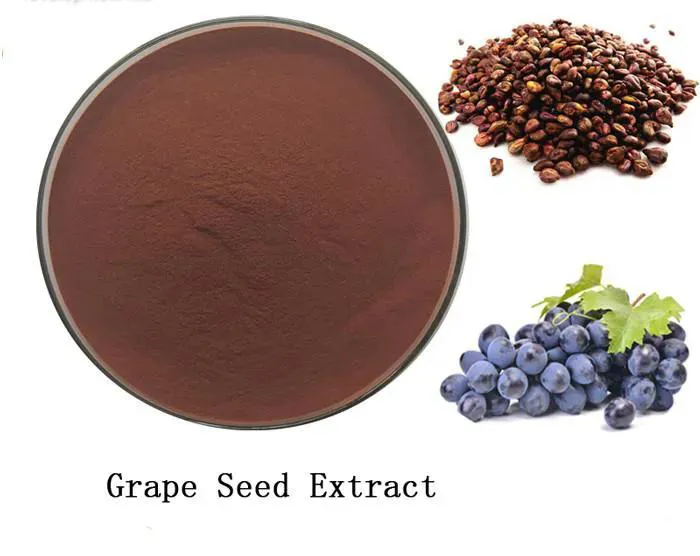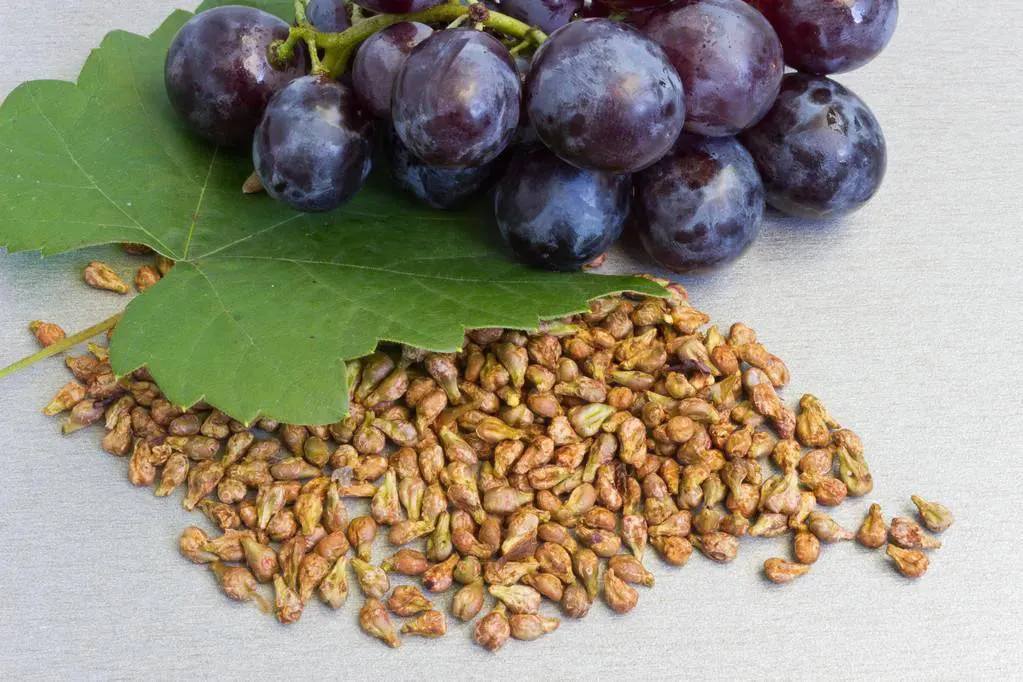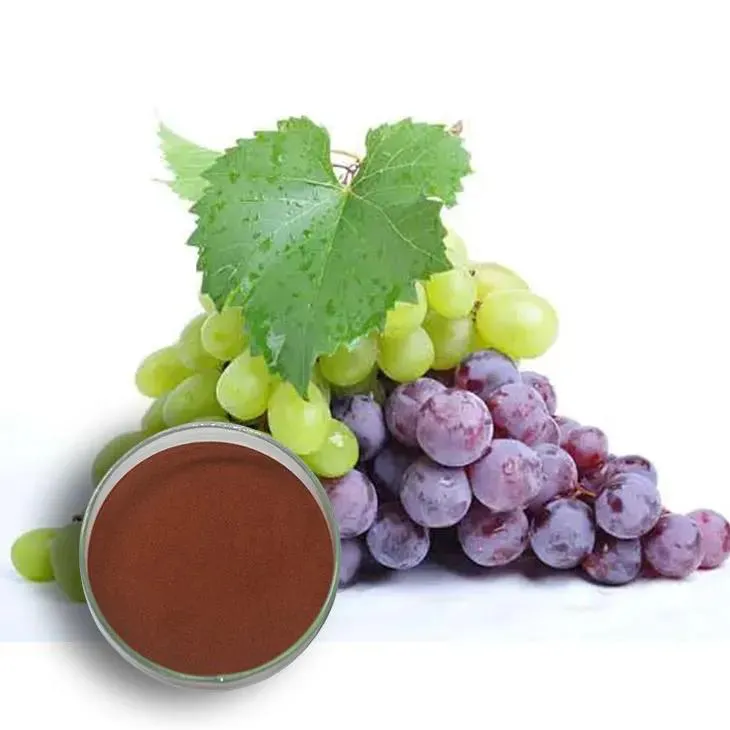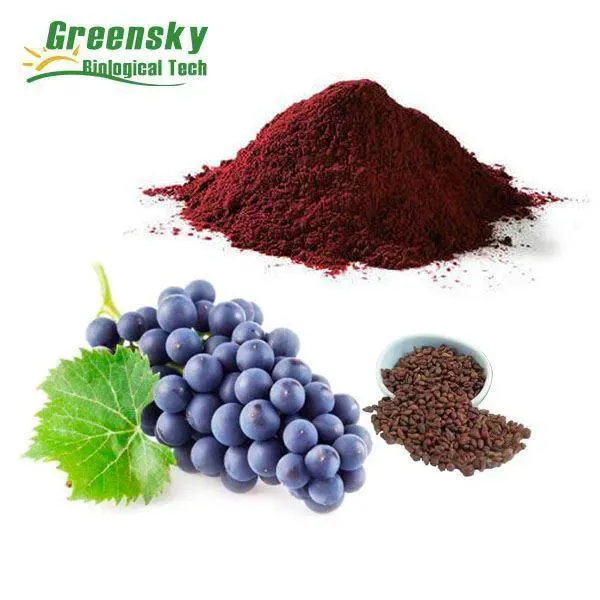- 0086-571-85302990
- sales@greenskybio.com
From Lab to Market: A Guide to Grape Seed Extract Tablet Stability and Its Impact on Consumer Health
2024-07-20

1. Introduction
Grape Seed Extract tablets have emerged as a popular supplement in recent years, owing to their potential health benefits. These benefits include antioxidant properties, anti - inflammatory effects, and potential cardiovascular protection. However, for consumers to fully realize these benefits, the stability of Grape Seed Extract tablets from the laboratory to the market is of utmost importance.
The stability of these tablets can influence their efficacy and safety. A tablet that degrades during storage or transportation may not deliver the expected health benefits and could potentially pose risks to consumers. This article will explore the various factors that affect the stability of Grape Seed Extract tablets and their implications for consumer health.

2. What is Grape Seed Extract?
Grape seed extract is a rich source of polyphenols, particularly proanthocyanidins. Proanthocyanidins are powerful antioxidants that can scavenge free radicals in the body, protecting cells from oxidative damage. These compounds are also thought to have anti - inflammatory and anti - carcinogenic properties.
The extraction process typically involves crushing grape seeds and using solvents to isolate the active compounds. The resulting extract is then formulated into tablets for easy consumption.

3. Factors Affecting Tablet Stability in the Laboratory
3.1 Formulation
The formulation of grape seed extract tablets plays a crucial role in their stability. The choice of excipients, which are inactive substances added to the tablet, can impact how well the active ingredient is preserved.
- Binders: Binders are used to hold the tablet together. However, some binders may interact with the grape seed extract, affecting its stability. For example, if a binder has a high moisture content, it could lead to hydrolysis of the active compounds in the extract.
- Fillers: Fillers are added to increase the size of the tablet. Incompatible fillers may cause physical or chemical changes in the extract. For instance, a filler with a large surface area may adsorb some of the active components, reducing their availability.
- Lubricants: Lubricants are necessary to prevent the tablet from sticking to the manufacturing equipment. But certain lubricants may have a negative impact on stability. They could form a barrier on the surface of the tablet, inhibiting the release of the active ingredient or promoting degradation.
3.2 pH
The pH of the tablet formulation is another critical factor. Grape seed extract is most stable within a certain pH range.
If the pH is too acidic or too alkaline, it can cause hydrolysis or other chemical reactions in the extract. For example, in an overly acidic environment, the proanthocyanidins in the grape seed extract may break down, losing their antioxidant properties.

4. Manufacturing Process and Its Impact on Stability
4.1 Temperature
During the manufacturing process, temperature control is essential. High temperatures can accelerate the degradation of grape seed extract.
For example, if the drying step in tablet production is carried out at an excessive temperature, the active compounds in the extract may be denatured or oxidized. This can reduce the efficacy of the tablets and potentially affect their safety.
4.2 Pressure
Compression pressure during tablet formation can also influence stability. Excessive pressure can cause the active ingredients to be physically or chemically altered.
It may lead to the formation of cracks or fissures in the tablet, which can expose the extract to environmental factors such as air and moisture, promoting degradation.

5. Storage Conditions and Tablet Stability
5.1 Temperature
Once the grape seed extract tablets are manufactured, proper storage temperature is crucial for maintaining their stability.
High temperatures can accelerate chemical reactions within the tablet, leading to degradation of the active ingredients. Ideally, tablets should be stored in a cool, dry place. For example, storing tablets in a room with a temperature above 30°C may cause the proanthocyanidins to break down more rapidly compared to storage at 20°C.
5.2 Humidity
Humidity is another significant factor. High humidity can cause moisture uptake by the tablets, which can lead to several problems.
- Moisture can cause the tablets to swell or dissolve prematurely. This not only affects the physical integrity of the tablet but also the release of the active ingredient.
- It can also promote the growth of microorganisms on the tablets, posing a safety risk to consumers.
5.3 Light
Exposure to light, especially ultraviolet (UV) light, can degrade the active compounds in grape seed extract tablets.
Therefore, tablets should be stored in opaque containers to protect them from light. Transparent packaging may allow light to penetrate and cause photodegradation of the extract.
6. Impact of Tablet Stability on Efficacy
The stability of grape seed extract tablets directly affects their efficacy in delivering health benefits to consumers.
If the tablets are not stable and the active ingredients degrade, the antioxidant, anti - inflammatory, and other beneficial properties may be lost or reduced. For example, if the proanthocyanidins in the tablets are degraded, the tablets may not be able to effectively scavenge free radicals in the body, thus diminishing their potential cardiovascular protection.
Moreover, unstable tablets may not release the active ingredient in the expected manner. If the tablet disintegration or dissolution is affected due to instability, the absorption of the active compound in the body may be impaired, further reducing its efficacy.
7. Impact of Tablet Stability on Safety
Tablet stability also has implications for consumer safety.
If the tablets degrade during storage or transportation, there is a risk of the formation of harmful by - products. For instance, degraded proanthocyanidins may form compounds that could have adverse effects on the body.
Also, as mentioned earlier, high humidity can lead to the growth of microorganisms on the tablets. Consuming tablets contaminated with microorganisms can cause various health problems, such as infections or food poisoning.
8. Quality Control Measures for Tablet Stability
8.1 In - process Testing
During the manufacturing process, in - process testing is essential to ensure tablet stability.
Manufacturers can test the pH, moisture content, and physical properties of the tablets at various stages of production. For example, they can measure the hardness of tablets during compression to ensure that excessive pressure is not being applied, which could affect stability.
8.2 Shelf - life Testing
Shelf - life testing is crucial for determining how long the tablets can be stored without significant degradation.
Manufacturers typically conduct accelerated stability tests, where the tablets are stored under extreme conditions (e.g., high temperature and humidity) for a short period to predict their long - term stability. They also perform real - time stability tests, which involve storing the tablets under normal storage conditions and monitoring their properties over an extended period.
9. Packaging Considerations for Tablet Stability
Packaging plays a vital role in protecting grape seed extract tablets from environmental factors that can affect their stability.
9.1 Barrier Properties
The packaging material should have good barrier properties against moisture, air, and light.
For example, using a multi - layer packaging with a moisture - resistant inner layer and an opaque outer layer can effectively protect the tablets from humidity and light. Aluminium - foil - lined blister packs are often used for this purpose as they provide excellent protection against all three factors.
9.2 Sealing
Proper sealing of the packaging is also crucial. A well - sealed package can prevent air and moisture from entering, ensuring the stability of the tablets.
If the seal is defective, air and moisture can penetrate the package, leading to degradation of the tablets. Manufacturers should conduct regular quality checks on the sealing process to ensure its integrity.
10. Conclusion
In conclusion, the stability of grape seed extract tablets from the laboratory to the market is a complex issue that has significant implications for consumer health. Factors such as formulation, manufacturing process, storage conditions, and packaging all play important roles in determining tablet stability.
Manufacturers must take appropriate measures to ensure the stability of these tablets, including careful selection of excipients, strict control of manufacturing processes, proper storage conditions, and suitable packaging. By doing so, they can ensure that consumers receive tablets that are both effective and safe, enabling them to fully realize the potential health benefits of grape seed extract.
FAQ:
What are the main factors affecting the stability of grape seed extract tablets?
The main factors include formulation components such as fillers, binders, and disintegrants. The type and proportion of these substances can impact the tablet's physical stability. Additionally, storage conditions play a crucial role. Temperature, humidity, and exposure to light can all affect the stability of grape seed extract tablets. For example, high humidity may cause moisture absorption, leading to degradation of the active ingredients.
How does the instability of grape seed extract tablets affect consumer health?
If the tablets are unstable, the active ingredients in grape seed extract, such as proanthocyanidins, may degrade. This can reduce the expected health benefits for consumers. Degraded products may also form substances that could potentially be harmful. For instance, if the antioxidant properties are diminished due to instability, consumers may not receive the intended protection against oxidative stress - related health issues.
What are the ideal storage conditions for grape seed extract tablets?
The ideal storage conditions for grape seed extract tablets are cool, dry, and dark places. A temperature range of around 15 - 25 degrees Celsius is generally suitable. Low humidity, preferably below 60%, helps prevent moisture absorption. Storing the tablets in their original packaging, which is often designed to protect against light and moisture, is also recommended.
How can manufacturers ensure the stability of grape seed extract tablets during production?
Manufacturers can ensure stability during production by carefully selecting high - quality raw materials. They need to optimize the formulation to create a stable matrix for the active ingredients. Quality control measures should be in place at every stage of production, including monitoring the mixing process, tablet compression, and coating (if applicable). Also, conducting stability tests during the development phase and in accordance with regulatory requirements helps in ensuring that the tablets will remain stable from the lab to the market.
Are there any regulatory standards for the stability of grape seed extract tablets?
Yes, there are regulatory standards. Regulatory agencies such as the FDA (in the United States) and the EMA (in Europe) have guidelines regarding the stability testing of dietary supplements like grape seed extract tablets. These standards typically require manufacturers to conduct stability studies over a specified period under different conditions. The data from these studies must be submitted as part of the product approval or registration process to ensure that the tablets on the market are stable and safe for consumers.
Related literature
- Stability of Grape Seed Extract in Different Formulations"
- "The Impact of Storage Conditions on Grape Seed Extract Tablet Efficacy"
- "Manufacturing Guidelines for Stable Grape Seed Extract Supplements"
- ▶ Hesperidin
- ▶ citrus bioflavonoids
- ▶ plant extract
- ▶ lycopene
- ▶ Diosmin
- ▶ Grape seed extract
- ▶ Sea buckthorn Juice Powder
- ▶ Beetroot powder
- ▶ Hops Extract
- ▶ Artichoke Extract
- ▶ Reishi mushroom extract
- ▶ Astaxanthin
- ▶ Green Tea Extract
- ▶ Curcumin Extract
- ▶ Horse Chestnut Extract
- ▶ Other Problems
- ▶ Boswellia Serrata Extract
- ▶ Resveratrol Extract
- ▶ Marigold Extract
- ▶ Grape Leaf Extract
- ▶ blog3
- ▶ blog4
- ▶ blog5
-
Chaste Berry Extract
2024-07-20
-
Grapefruit Seed Extract Powder
2024-07-20
-
Konjac Powder
2024-07-20
-
Dandelion Root Extract
2024-07-20
-
Thunder God Vine Extract
2024-07-20
-
Calendula Extract
2024-07-20
-
Lemon Balm Extract
2024-07-20
-
Eucommia Ulmoides Extract
2024-07-20
-
Saponin Extract
2024-07-20
-
Phellodendron Extract
2024-07-20





















